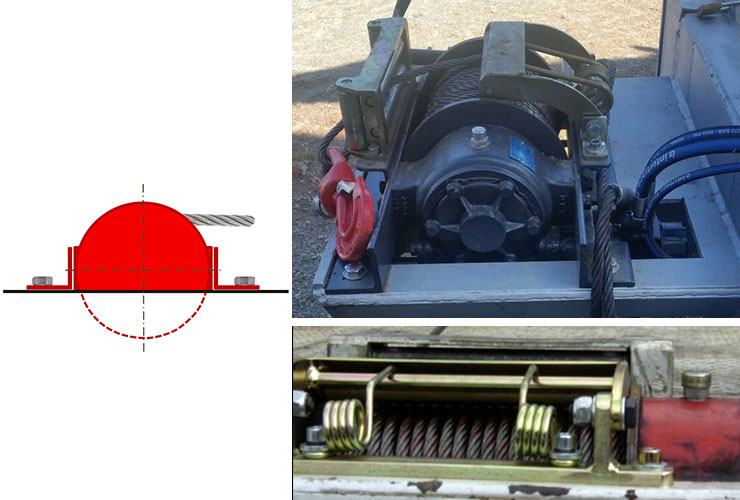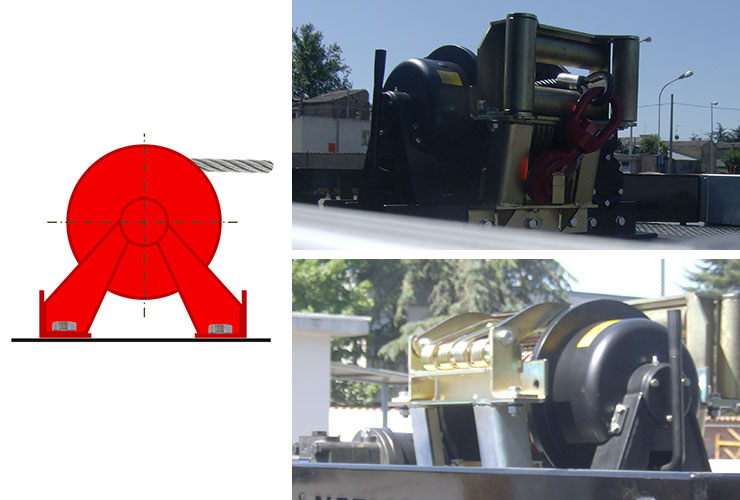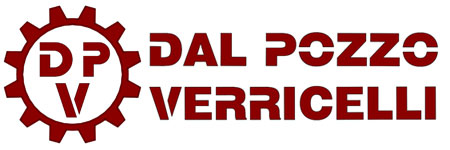Frequently Asked Questions
Here below few Frequently asked questions, please contact Dal Pozzo’s staff for more details or doubts:
What are the two quantities involved in terms of towing force?
Effective force (also called dynamometer pull or direct line pull): it is the real axial force applied to the rope, therefore to the hook, which results from the torque of the drum and the rope layer
Towing capacity: it is the indicative mass of the vehicle to be towed which on average corresponds to about three times* the direct line pull.
*= for better accurancy and safety of the customer/workshop/end user, we still recommend carrying out the necessary calculations, considering an inclined plane, sliding/rolling friction and any other passive resistance to the advancement of what must be towed. Dal Pozzo winches only guarantees the "effective force" value
What is the difference (under the functional point of view) of winches with worm drive compared to a planetary gearbox one?
- SThey are mainly three:
- irreversibility of the movement except for voluntary activation of the operator or activation of the disengagement (no need of valve)
- use of the input hydraulic power: in the worm drive system, it is more focused on the force while in the planetary gearbox type, speed is slightly favored.
- greater accuracy of movement at low speeds
What's the purpose if rope pressure rollers and fairlead rollers?
What data do I need to provide to request advice on choosing the product or to have an effective request for an offer without knowing the model already?
-
The exemplary request that allow us to respond quickly with a certain degree of precision should contain at least the following information:
- Hydraulic or electric
- Required pulling line force required (or towing force, see questions above) and at wich rope layer or distance from the winch
- Above points wants to clarify if the needed force is needed along the whole stroke of the hook, from the beginning (empty drum) to the end (full drum) of the recovery work
- Total lenght of the above mentioned stroke
- General data of the vehicle or equipment on which to mount our product
- Minimum required speed at maximum flow rate (in case of less flow, please inform us)
- Input power (kW for electric winches, max pressure & max. oil flow for hydraulic winches
- With or without pressure roller (see above questions for details), remote control or other accessories
- Specific needs about working features, environment conditions, funzionali, hydraulic/electric particular characteristics, special ropes, etc…
If you do not have all this data or have doubts, do not desist! You can still count on our advice, we will be happy to check together how we can help you.
What’s the kind of fixing of the winch on the machine’s structure?
In the electric range (DPE), the mounting way is like in the figure “A”, in the hydraulic range (DPH) and mechanical ones (DPM) we feature both kinds.
Fig. A

Fig. B

Hydraulic or electric winch?
The first variable is obviously the power availability of the system, both in the retrofit and at the design level.
It is clear that an hydraulic motor is more resistant and requires less maintenance and fewer precautions, it is also easier to partialize the rotation speed without additional components; it can work on more intensive and long-lasting work cycles.
The electric winch has a greater versatility in terms of installation also as a "portable part" and does not require hydraulic lines nor has potential oil leaks and it reaches an excellent work force compared to the dimensions.
We do not have air motors in our production range.
What is the criterion for choosing between wired remote control and radio remote control?
The wired remote-control allows a greater simplicity of the installation and system, as well as not being exposed to almost any electromagnetic interference. Fault finding and repair possible without specific equipment. The radio remote-control allows to have no cables between the winch and the operator that could in some cases constitute a risk, a hindrance, as well as being subject to wear or damage. Moreover, with this device, the operator can stand at a distance up to 50m from the receiving antenna, on the standard version (greater distance is available with the special version)
How much rope to coil on the drum?
How much rope to coil on the drum?
The technical data sheets indicate the maximum length of the rope wrapped in the drum, however we recommend providing the minimum necessary in order to contain costs and have the best pulling line performance, remaining on the most performing layers.
DAL POZZO can supply winches complete with rope with lead thimble and hook.
Does Dal Pozzo Verricelli supply only bronze wheel/worm screw system winches?
Incorrect, it only builds this type (so far) but, being associated with TMA winches, it can supply a wide range of planetary reduction winches as well, with effective Max pull @ first layer up to 30t.






